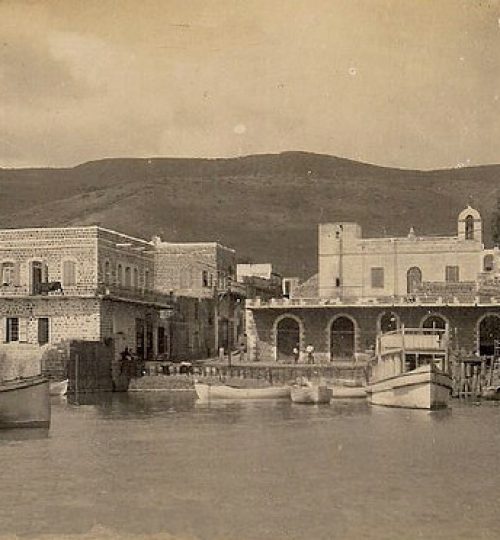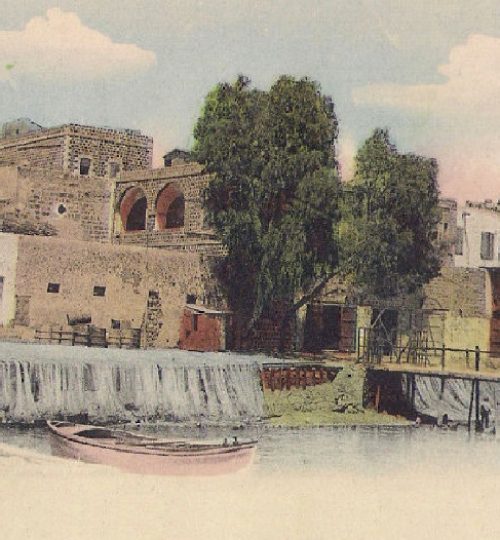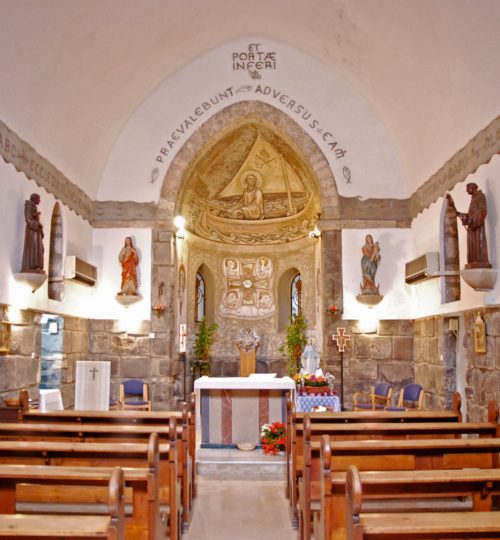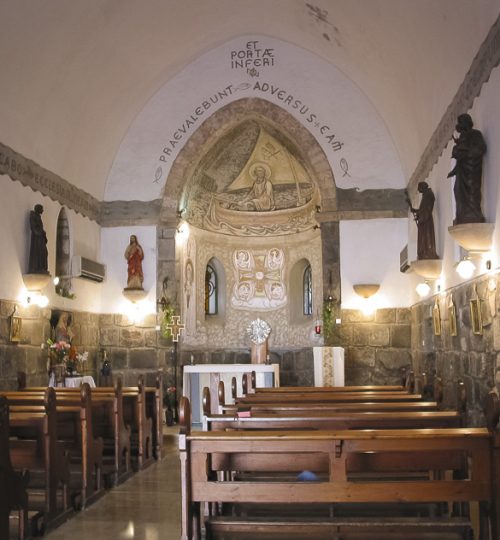History
of the Sanctuary
of St. Peter
The History
For centuries the sanctuary has been the remembrance of the various annecdotes described in the Gospel, which took place on the shores of Lake Tiberias. It was dedicated to Peter the apostle and to the primacy conferred on him by the Lord (Mt 16:18). Today, in particular, the sanctuary is the only one that remembers the "miraculous catch" of the fifth chapter of the Gospel of Luke. The church was built around 1100 by the Crusaders. It has the shape of a boat, with the apse in the shape of a bow. It symbolizes the Church of Christ resisting storms according to the divine promise that "the powers of the underworld will not prevail over it". (Mt 16:18). Conquered Tiberias by the Muslims in 1187, the church was later converted into a mosque. Only towards the middle of the seventeenth century did the Franciscans begin to come from Nazareth every year to celebrate the feast of St. Peter (and for this, paying a sum to the Muslims). In the same century the Franciscans came into possession of the church, but only in 1847 could they build a convent next to it. The facade of the church dates back to 1870. In the front courtyard there is a bronze statue of St. Peter; it is an identical copy of the one present in the Vatican Basilica. Today, property of the Custody of the Holy Land, it is managed by the Koinonia Giovanni Battista community, together with the convent and the Casa Nova. Every year, on February 22, the feast of the Chair of St. Peter is celebrated, gathering the parishioners of the area, Christians from Galilee, religious from different communities and pilgrims visiting the sanctuary.



